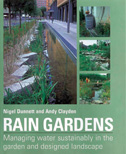water conservation
By Eric Herman It’s a given: As human beings, we are all utterly dependent on the availability of fresh, clear, potable water for our survival. As a result, the preservation of aquatic resources of all types is an interest in which all people should share. At the same time,
In the “My Perspective” piece I wrote for WaterShapes EXTRA! last May, I shared my thoughts about the universal nature of water and how our relationship to it binds watershapers from all specialties — pools, ponds, waterfalls and all the rest. Along the way, I made the point that water, in all of its perceived abundance, is too often
The numbers are eye-popping: Just about one percent of all the water on Planet Earth exists as fresh water suitable for human consumption. And depending on where you live in the United States, anywhere from a quarter to almost half of that precious resource
If you spend as much time as I do reading the myriad journals available to the landscape trades, you’ll no doubt have noticed their intense concentration on water quality and preservation. It’s about time these issues came to the fore: We’ve spent so much time as a society focusing on making our lives easier that many of us seem to have forgotten that water is a finite resource. Rest assured: I’m not somebody who believes that environmentalism is all about undermining the desire for beauty or luxury. Nonetheless and now more than ever before, it is apparent that we must find ways to manage, preserve and marshal dwindling water resources while at the same time we must continue to offer our clients spaces in which they can gather to enjoy beauty, tranquility or recreation. The hard fact is, only about three percent of the water on this planet can be
In most watershapes, we circulate and treat water through use of pumps and filters – and although we still don’t think about it much these days, we do so because fresh water is in precariously short supply and we can’t simply fill and dump it as we please. Yet even a perfect watershape – that is, one devoid of leaks, never subject to splash-out and never in need of backwashing – occasionally requires the addition of new water if only because evaporation will carry it away, bit by bit. In fact, there’s no way to cut Mother Nature out of her share, or to keep her from
There may still be some who resist the idea, but by now it is verifiable fact that plant material can be used to treat and purify water in artificial watershapes as well as in natural bodies of water. For decades, in fact, scientists have borne witness to these processes in natural wetlands – so much so that today, these concepts are being studied around the world using artificial wetlands and floating islands that mimic natural structures and processes. Our firm, Floating Island International of Shepherd, Mont., is predictably focused on the floating island concept. In our efforts to understand all of the nuances and specifics of how plants on floating islands can be used to best advantage, we have made contact and worked worldwide with scores of independent researchers and institutions across a range of settings, applications and agendas. Yes, we’ve been gratified by the resulting findings and the benefits that reportedly flow from use of our systems. In a more important and greater context, however, we see this collection of empirical data and anecdotal evidence as conclusive proof that biological water treatment is not only viable, but is also surprisingly
In recent weeks, I’ve spent a good bit of time speaking to landscaping colleagues, garden clubs and symposium attendees about our general need to get smarter when it comes to how we think about landscapes. This is all part of my perpetual campaign to convince everyone to use the right plants in the right places in order to save water, labor and the fuels consumed in maintaining them. A big part of my pitch is one I’ve addressed before in this space – that is, I object to
Conserving water in a serious way is something many of us have had to do at one time or another. Whether it has resulted from drought or some other condition affecting local supplies, we know that any sort of shortage has significant implications not just for us, but for our communities, clients and landscapes as well. In those landscapes, water conservation is about finding ways to reduce water use and coming up with more efficient ways to use it. This is essential to ensuring the survival of plants (and our livelihoods) and has to do with giving gardens the amount of water they need to thrive: Too little, and plants will shrivel up and die; too much, and many will drown just as surely. For the most part, what landshapers encounter is the need to cope with shortfalls and pronounced dry spells rather than floods, which is why most professionals install irrigation systems that make it easier for





















A Precious Resource